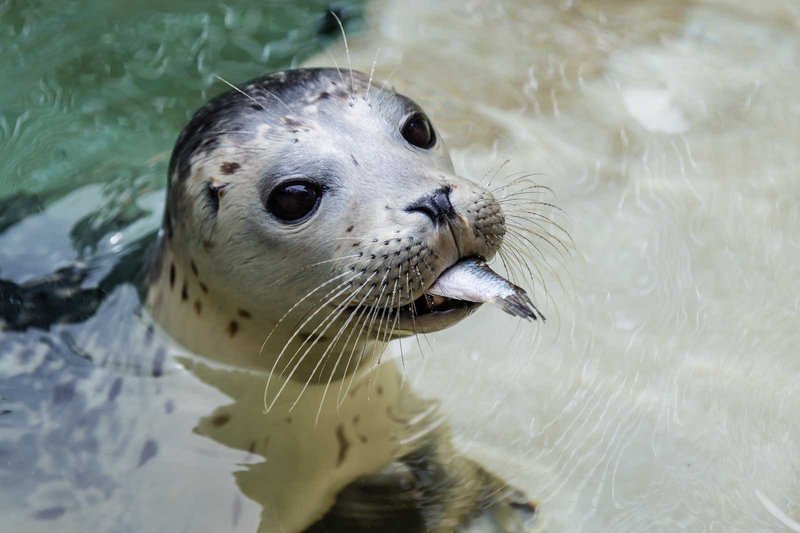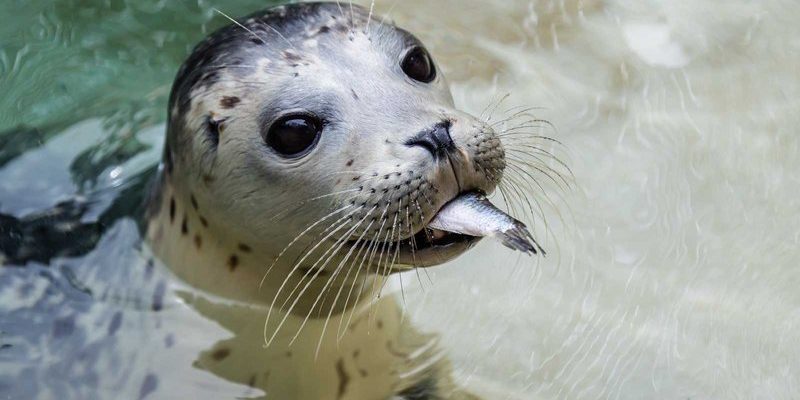
Understanding a harbor seal’s diet isn’t just about their survival; it reveals a lot about their role in the ecosystem. A bit like how we choose our meals based on what’s available and healthy, harbor seals adapt their eating habits based on their environment. Let me explain how these marine mammals thrive in their watery habitats and what they munch on to stay healthy and energetic.
What Do Harbor Seals Eat?
You might be wondering, “What’s on the menu for a harbor seal?” Well, these seals have a varied diet, which is key to their adaptability. Harbor seals primarily feast on fish, but they’re not picky eaters. Some of their favorite catches include:
- Salmon
- Herring
- Flatfish
- Sandeel
- Mackerel
These seals are opportunistic feeders, which means they will go after whatever is abundant in their surroundings. This flexibility helps them thrive in different coastal areas. For example, if one type of fish is scarce, they’ll simply switch to another. It’s a bit like how we might change our dinner plans based on what’s in the fridge.
How Do Harbor Seals Hunt?
Now that we know what they eat, let’s talk about how they catch their food. Harbor seals are skilled hunters and have several techniques to snag their meals. They rely primarily on their excellent eyesight and whiskers, which help them detect movements in murky waters.
Harbor seals can dive to impressive depths—sometimes over 500 feet! They’re capable of holding their breath for around 30 minutes while they hunt. When they spot a fish, they can use their speed and agility to chase it down. Here’s where the fun part comes in: they often use a technique called “stalking.” They’ll quietly follow their prey until the right moment to strike. It’s like being a stealthy ninja underwater!
Feeding Habits Throughout the Year
Harbor seals aren’t just creatures of habit; their feeding patterns change with the seasons. During the warmer months, fish are typically more abundant, and these seals take full advantage by feeding extensively. Spring and summer are prime times for hunting, as many species of fish are spawning and swimming near the surface.
As temperatures drop in the fall and winter, the availability of their favorite fish can diminish. During these colder months, some seals might switch their focus to other prey, like squids or even crustaceans. It’s a bit like altering your diet when you can’t find your favorite ingredients at the grocery store. Harbor seals display remarkable resilience in their feeding habits, allowing them to adapt as conditions change around them.
How Much Do Harbor Seals Eat?
You might be curious about just how much a harbor seal consumes in a day. On average, they eat about 5% to 7% of their body weight daily. For a seal weighing around 200 pounds, that could mean 10 to 15 pounds of fish! This hefty appetite is essential for maintaining their blubber, which keeps them warm in chilly waters.
Interestingly, adult seals have a slower metabolism than younger ones. Young harbor seals, still growing and developing, may need to eat more frequently to keep up with their energy demands. It’s kind of like how our metabolism changes as we grow older—what worked for us as kids might not suit us the same way as adults.
Impact of Environment on Feeding
The environment plays a huge role in the diet and feeding habits of harbor seals. Water temperature, food availability, and human activity can all affect their nutritional choices. For instance, pollution can impact fish populations, leading to less-than-ideal feeding conditions.
Imagine you’re trying to eat healthy, but the local farmer’s market has fewer fresh veggies due to harsh weather. Similarly, harbor seals might struggle to find enough food if their preferred fish species decline. Conservation efforts are essential to ensure that these adorable seals continue to thrive in their natural habitats.
Human Interaction and Its Effects
Human activities, such as fishing and boating, can impact how harbor seals feed. Overfishing can deplete important fish stocks, making it harder for seals to find their meals. Additionally, boat traffic can disrupt their hunting grounds, forcing them to alter their feeding patterns.
You might think of it like trying to enjoy a picnic in a busy park. If there are too many people around, it can be hard to relax and enjoy your food. Similarly, harbor seals may find it challenging to hunt effectively if their spaces are crowded with boats or other disturbances.
Conservation and the Future of Harbor Seals
Protecting harbor seals means looking out for their food sources and habitats. Conservation efforts focus on reducing pollution and managing fish stocks to ensure that these seals have access to a healthy diet. Organizations and governments are working hard to balance human needs with the well-being of harbor seals.
So, what can we do? Supporting marine conservation initiatives is a great start. Simple actions like reducing plastic use and promoting sustainable fishing can make a significant difference. You might even consider visiting a coastal area where harbor seals thrive to learn more about them and appreciate their role in our ecosystem.
In conclusion, the diet and feeding habits of the harbor seal reflect the delicate balance of nature. These seals have developed a flexible, adaptive approach to feeding, allowing them to thrive in various environments. By understanding and protecting their diets, we help ensure that these charming creatures continue to flourish for generations to come. So next time you spot a harbor seal lounging on a rock, think about what it took for them to get there—it’s a fascinating journey!

